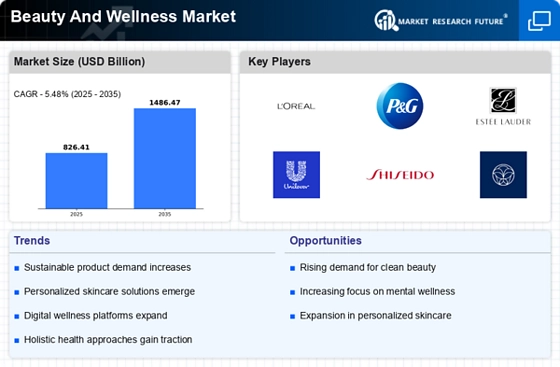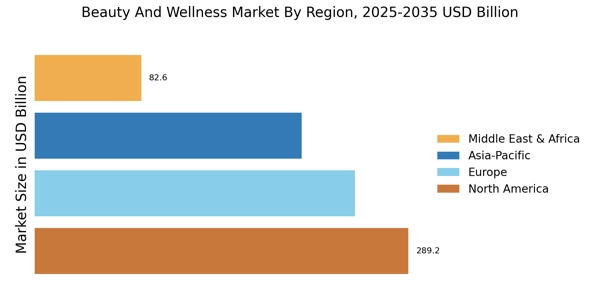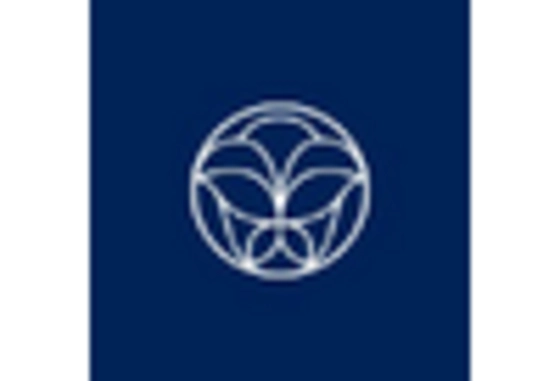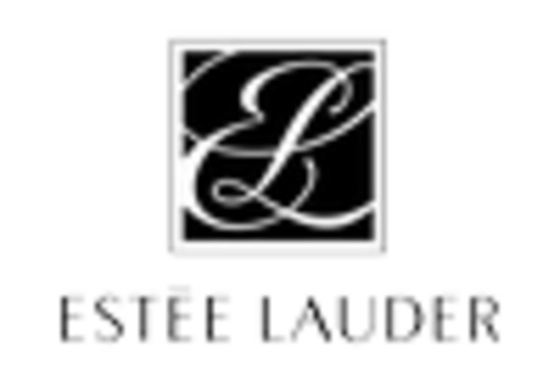The Beauty and Wellness Market is currently characterized by a dynamic competitive landscape, driven by innovation, sustainability, and digital transformation. Major players such as L'Oreal (France), Procter & Gamble (US), and Estée Lauder (US) are actively reshaping their strategies to maintain market relevance. L'Oreal (France) has positioned itself as a leader in sustainability, focusing on eco-friendly product lines and packaging innovations. Procter & Gamble (US) emphasizes digital engagement and personalized consumer experiences, leveraging data analytics to tailor offerings. Estée Lauder (US) continues to expand its luxury portfolio while investing in e-commerce capabilities, reflecting a strategic focus on high-end consumer segments. Collectively, these strategies contribute to a competitive environment that prioritizes innovation and consumer-centric approaches.
Key business tactics within the Beauty and Wellness Market include localizing manufacturing and optimizing supply chains to enhance efficiency and responsiveness. The market structure appears moderately fragmented, with a mix of established brands and emerging players. The influence of key players is substantial, as they set trends and standards that smaller companies often follow. This competitive structure fosters an environment where agility and adaptability are crucial for success, compelling companies to continuously refine their operational strategies.
In August 2025, L'Oreal (France) announced a partnership with a leading tech firm to develop AI-driven skincare solutions. This strategic move is likely to enhance L'Oreal's product personalization capabilities, allowing for tailored skincare regimens based on individual consumer data. Such innovations not only strengthen L'Oreal's market position but also align with the growing consumer demand for personalized beauty solutions.
In September 2025, Procter & Gamble (US) launched a new line of sustainable beauty products, utilizing biodegradable materials and ethically sourced ingredients. This initiative underscores the company's commitment to sustainability, which is increasingly becoming a key differentiator in the market. By aligning product offerings with consumer values, Procter & Gamble (US) is likely to enhance brand loyalty and attract environmentally conscious consumers.
In July 2025, Estée Lauder (US) expanded its digital marketing efforts by integrating augmented reality (AR) features into its online shopping experience. This strategic enhancement allows consumers to virtually try on products, thereby improving engagement and conversion rates. The integration of AR technology reflects a broader trend towards immersive shopping experiences, which could redefine consumer interactions with beauty brands.
As of October 2025, current competitive trends in the Beauty and Wellness Market are heavily influenced by digitalization, sustainability, and the integration of advanced technologies such as AI. Strategic alliances are increasingly shaping the landscape, enabling companies to pool resources and expertise to drive innovation. Looking ahead, competitive differentiation is expected to evolve, with a notable shift from price-based competition to a focus on innovation, technology, and supply chain reliability. This transition suggests that companies that prioritize these elements will likely secure a more sustainable competitive advantage in the future.


















Leave a Comment